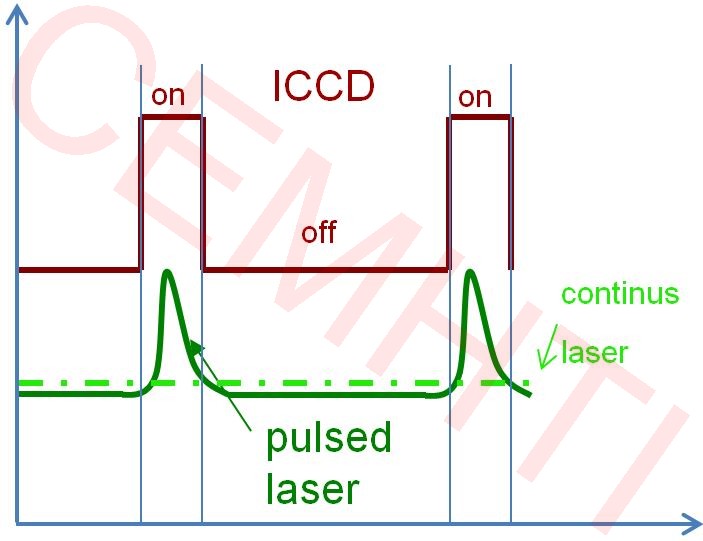See our list of publications
introduction
Any sample whose temperature is above 0K will emit light. The maximum intensity spectral position will displace to high energies as its temperature increases. This emitted light will remain in the IR range as long as this temperature remains below 800 K. After, the emission will begins to be visible (hot steel is orange before melt).
It is called thermal emission.
In another hand, we have to keep in mind that Raman signal is very weak, it is impossible to see in with our eyes (most of the time, Raman scattering light stands in visible spectral range).
As a result, thermal emission will be much more intense than Raman intensity, so the Raman signal will be invisible at high temperature (in normal configuration)
solution
There are ways to solve these problems. It is important to try to limit emissivity of the sample (surface roughness, purity of the sample, spatial filtering).
An efficient technique is the use of high energy laser (UV), the excitation line recedes from thermal emission maximum.
Another way is the temporal resolution, as detailed below.
time resolved set-up
The principle is based on the temporal discrimination between Raman signals and thermal emission. In conventional Raman spectroscopy, a continuous laser source is used for excitation, and the obtained Raman signal is continuous as well. Similarly, thermal emission is continuous. To separate these two signals, the laser excitation will be concentrated in time –the Raman signal will be take place at the same time - and only open the detector while the laser emits.


page créée et maintenue par Aurélien Canizarès